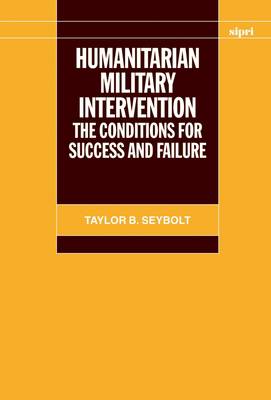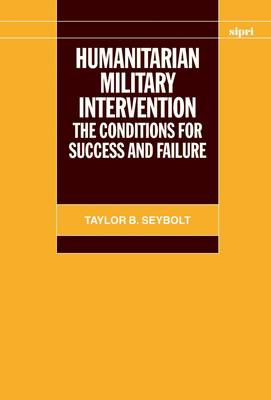
Bedankt voor het vertrouwen het afgelopen jaar! Om jou te bedanken bieden we GRATIS verzending (in België) aan op alles gedurende de hele maand januari.
- Afhalen na 1 uur in een winkel met voorraad
- In januari gratis thuislevering in België
- Ruim aanbod met 7 miljoen producten
Bedankt voor het vertrouwen het afgelopen jaar! Om jou te bedanken bieden we GRATIS verzending (in België) aan op alles gedurende de hele maand januari.
- Afhalen na 1 uur in een winkel met voorraad
- In januari gratis thuislevering in België
- Ruim aanbod met 7 miljoen producten
Zoeken
€ 67,95
+ 135 punten
Omschrijving
This study focuses on the questions of when and how military intervention in conflicts can achieve humanitarian benefits. It uses the standard that an intervention should do more good than harm to evaluate the successes and failures. The author develops a methodology to determine the number of lives saved, as a minimalist measure. The analysis of 19 military operations in the 6 case studies of Iraq, Somalia, Bosnia, Rwanda, Kosovo and East Timor reveals both successful and unsuccessful interventions in the same locations. The study posits that an intervention's short-term effectiveness depends primarily on six factors within the control of the intervenor, rather than factors inherent within the conflict. Political and humanitarian dimensions are combined to create a typology that compares the needs of populations suffering from conflict with an intervenor's military intervention strategies, motives, capabilities and response time. Hypotheses derived from the model are tested in the case studies and policy implications are offered.
Specificaties
Betrokkenen
- Auteur(s):
- Uitgeverij:
Inhoud
- Aantal bladzijden:
- 312
- Taal:
- Engels
- Reeks:
Eigenschappen
- Productcode (EAN):
- 9780199551057
- Verschijningsdatum:
- 15/09/2008
- Uitvoering:
- Paperback
- Formaat:
- Trade paperback (VS)
- Afmetingen:
- 155 mm x 231 mm
- Gewicht:
- 544 g

Alleen bij Standaard Boekhandel
+ 135 punten op je klantenkaart van Standaard Boekhandel
Beoordelingen
We publiceren alleen reviews die voldoen aan de voorwaarden voor reviews. Bekijk onze voorwaarden voor reviews.









